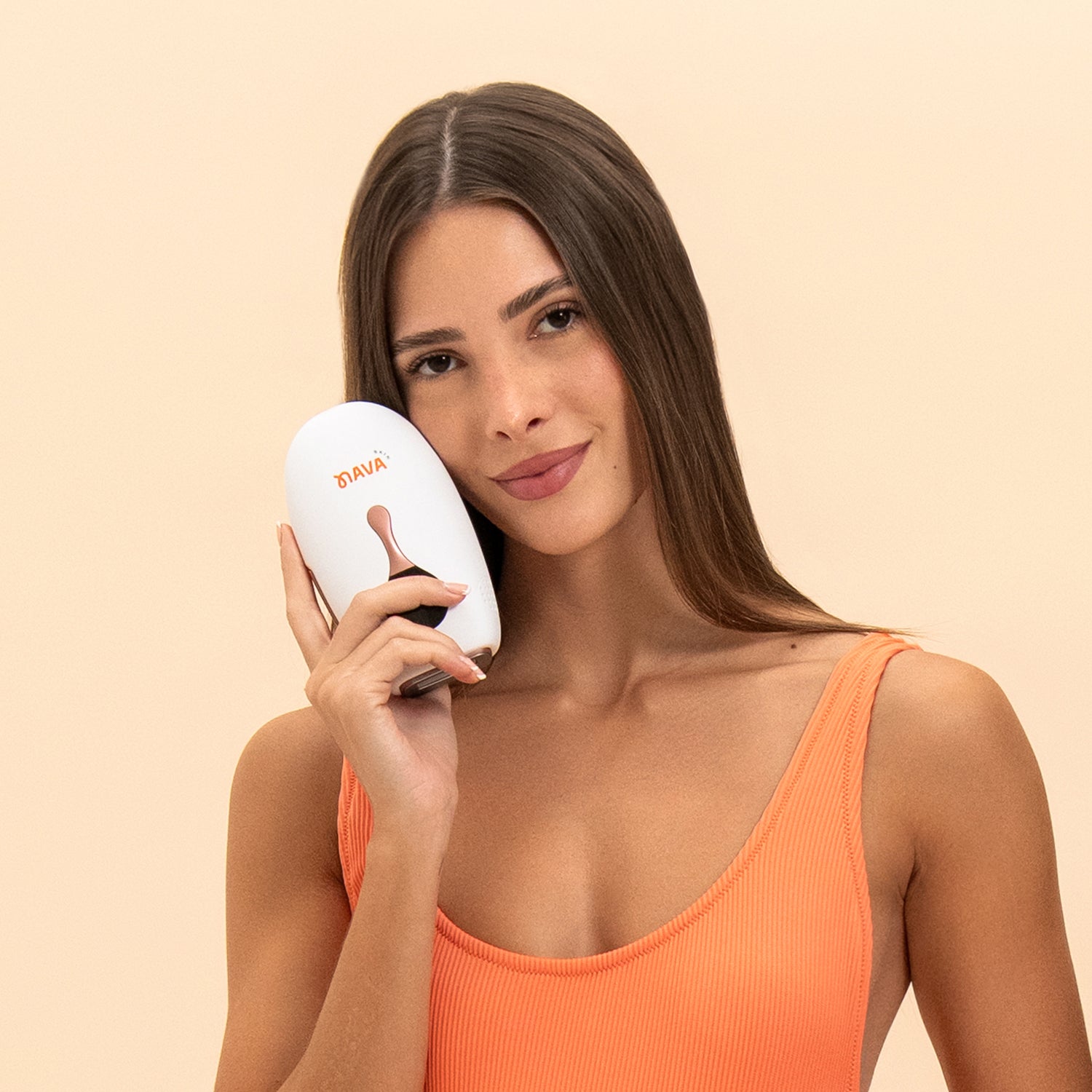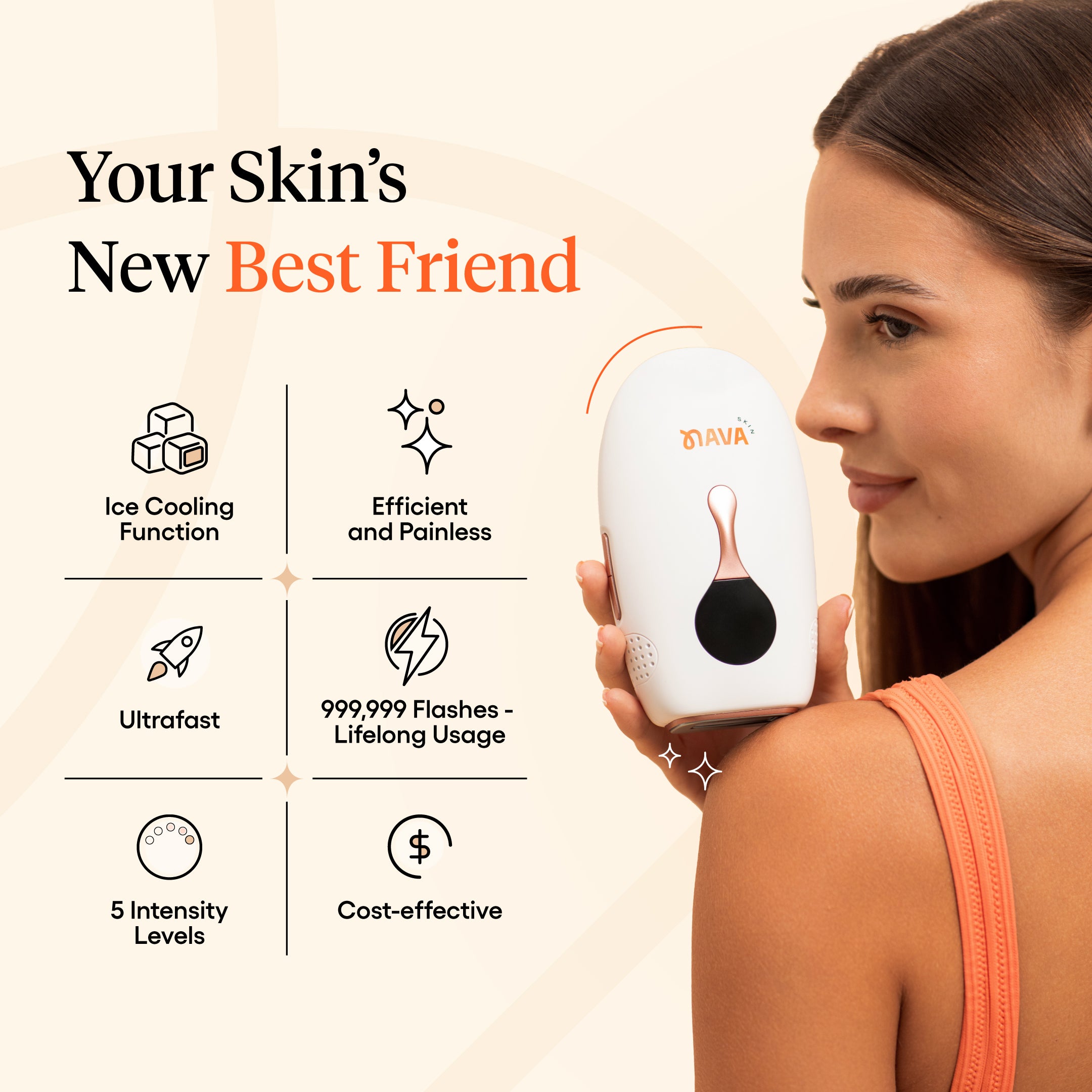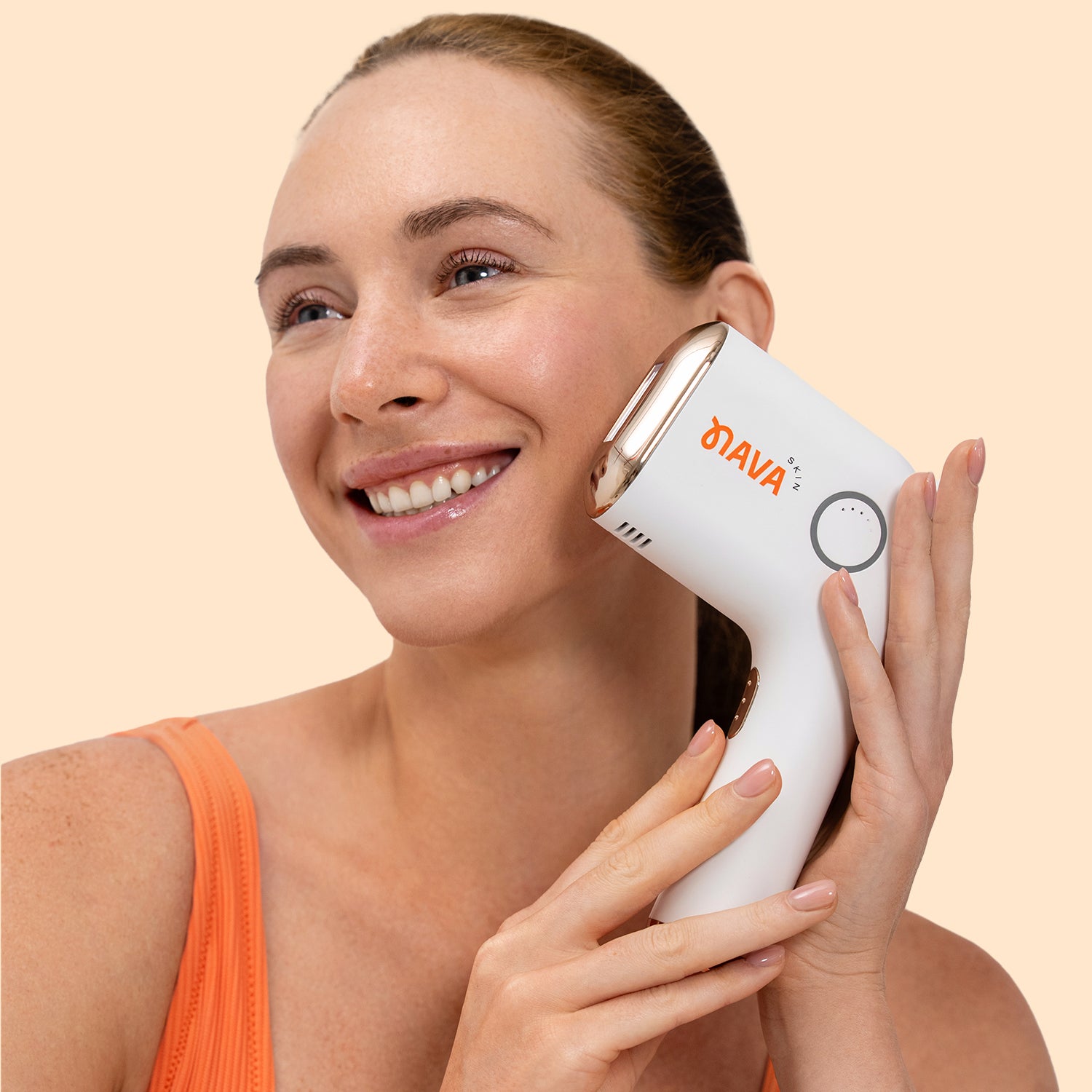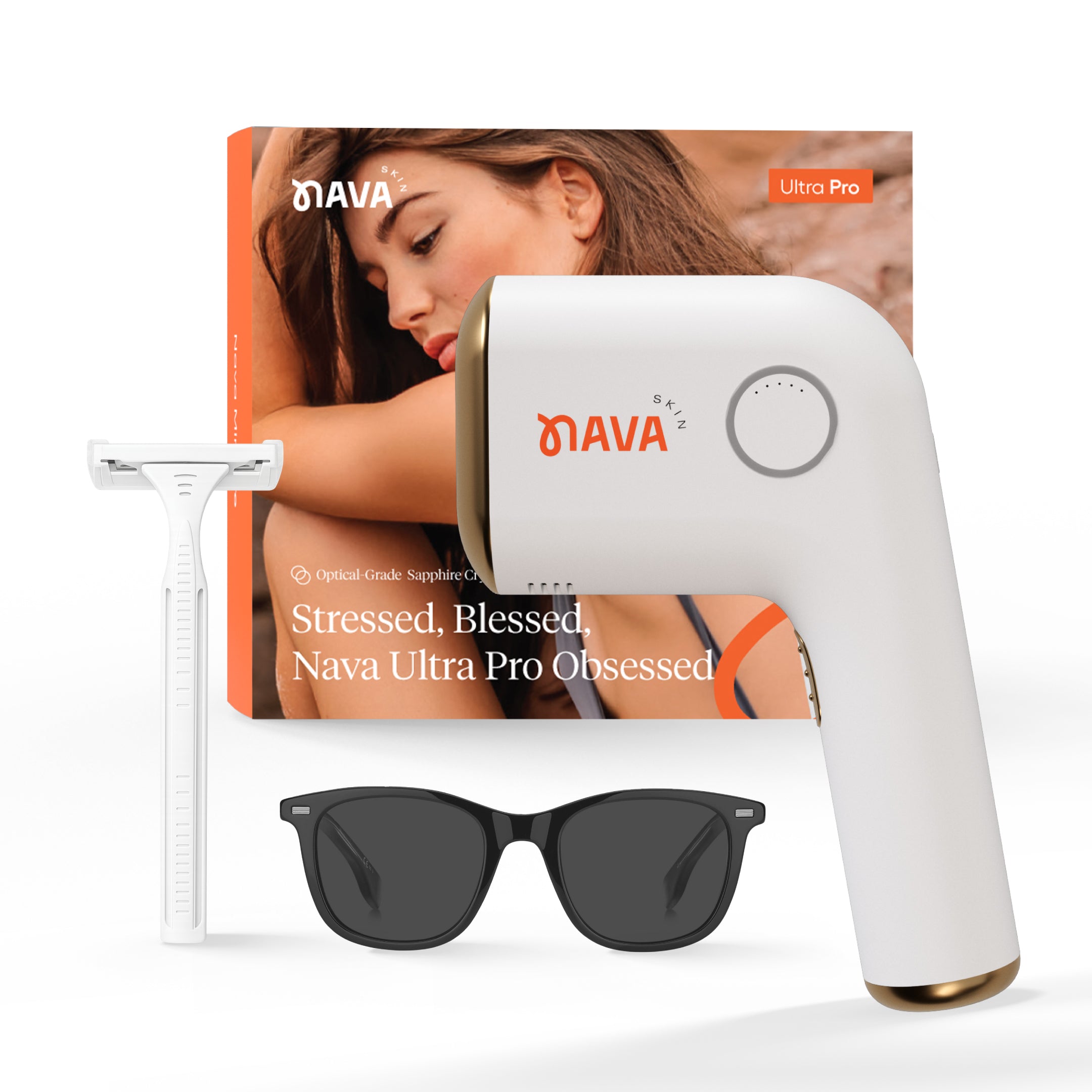If you’ve experienced a burn from laser hair removal, you’re likely wondering how long it will last and what you can do to help it heal. While laser hair removal is generally safe, burns can occur if the treatment isn’t administered correctly, especially on sensitive skin types.
Thankfully, there are steps you can take to care for your skin, and if you’re looking for a lower-risk alternative, at-home IPL (Intense Pulsed Light) devices may be the answer.
In this guide, we’ll explore what causes laser burns, how to care for your skin after laser treatments, and why IPL offers a gentler, at-home solution with fewer risks.
1. What Causes Burns During Laser Hair Removal?
Laser hair removal uses concentrated light to target the pigment in hair follicles, generating heat that damages the follicle to reduce hair growth. However, when this heat is too intense, or the laser is incorrectly used, it can lead to burns. Here are a few factors that may increase the likelihood of burns:
- Incorrect Intensity Setting: When the laser’s intensity is too high for your skin type, it can cause excessive heat, leading to burns.
- Inexperienced Technicians: Professional laser treatments should always be administered by trained professionals. Inexperienced or poorly trained technicians can increase the risk of burns due to improper technique or miscalculated settings.
- Skin Tone and Hair Color: People with darker skin tones or those with lighter hair are more likely to experience burns, as the contrast needed for effective treatment is lower. Some clinics may not have lasers that are safe for all skin tones.
- Pro Tip: If you have sensitive skin or a darker skin tone, consider at-home IPL as a safer alternative. IPL’s broader light spectrum and adjustable intensity levels make it suitable for more skin types, with a lower risk of burns.
2. What Do Laser Burns Look Like?
Laser burns can vary in appearance depending on the severity. Here’s what to look for:
- Redness and Swelling: Mild burns often look similar to sunburn, with redness, warmth, and slight swelling in the treated area.
- Blisters: More severe burns may cause blistering. Blisters are the skin’s way of protecting itself by creating a fluid barrier over the injured area.
- Scabbing or Peeling: In some cases, burns may cause scabbing or peeling as the skin begins to heal. This is common with second-degree burns and usually fades over time with proper care.
- Hyperpigmentation: Some people may experience dark or light spots (hyperpigmentation or hypopigmentation) as a result of burns. These marks can be temporary or, in rare cases, more permanent.
- Pro Tip: Monitor any unusual symptoms closely. If you notice severe pain, blistering, or signs of infection, seek medical advice as soon as possible.
3. How to Care for Your Skin After a Laser Burn
If you’ve experienced a laser burn, taking care of your skin is essential to prevent further irritation, reduce pain, and help the healing process.
- Apply a Cool Compress: Gently apply a cool (not cold) compress to the burned area to relieve heat and reduce swelling. Avoid ice, as direct cold can irritate the skin further.
- Use Aloe Vera Gel: Aloe vera is known for its soothing, anti-inflammatory properties. Apply a thin layer to the burned area to calm the skin and reduce redness.
- Moisturize: A gentle, fragrance-free moisturizer helps keep the skin hydrated, promoting faster healing and preventing peeling or scabbing.
- Avoid Sun Exposure: Burns are especially sensitive to the sun. Keep the area protected from direct sunlight, and use a broad-spectrum SPF 30 or higher if you need to be outside.
- Stay Away from Harsh Products: Avoid using skincare products with retinol, acids, or alcohol on the affected area until it has fully healed, as these ingredients can worsen irritation.
- Pro Tip: If the burn doesn’t improve within a few days or shows signs of infection, consult with a dermatologist for additional care options.
4. Why IPL Is a Safer Alternative with Fewer Risks of Burns
For those who are wary of laser burns but still want effective hair reduction, IPL provides a safer alternative. At-home IPL devices like the Nava Mini Pro and Nava Ultra Pro use a gentler light spectrum, which is easier on the skin and reduces the risk of burns.
- Lower Intensity: Unlike laser devices that concentrate light in a single wavelength, IPL emits a broad spectrum of light at a lower intensity. This minimizes heat buildup and reduces the chance of burns.
- Adjustable Intensity Levels: IPL devices like Nava Mini Pro and Nava Ultra Pro allow you to control the intensity based on your skin’s comfort level. Starting with a lower setting can help you gauge how your skin responds, minimizing the risk of irritation.
- Ice-Cooling Technology: The Nava Ultra Pro is equipped with ice-cooling technology that keeps the skin cool during treatment, further reducing any risk of burns or discomfort.
- Pro Tip: If you’ve experienced laser burns before, IPL may be the safer choice for sensitive skin, offering similar results without the risks of high-intensity laser treatments.
5. Post-Treatment Care for IPL: Gentle on the Skin
Even though IPL is gentler than laser hair removal, caring for your skin after treatment is still essential to ensure optimal results and maintain skin health. Here are some tips for post-IPL care:
- Use a Gentle Moisturizer: After IPL treatments, apply a light, fragrance-free moisturizer to keep your skin hydrated. This will soothe the skin and lock in moisture.
- Avoid Sun Exposure: Sun exposure can increase the risk of pigmentation changes post-IPL, so apply sunscreen with SPF 30 or higher on treated areas if you’re going outdoors.
- Stay Away from Heat and Sweat: For at least 24 hours post-treatment, avoid activities that generate heat, like hot showers or intense workouts. This prevents irritation in the treated area.
- Do Not Exfoliate Right Away: Avoid exfoliating the treated area immediately after IPL, as this may cause unnecessary irritation. Give your skin a few days to recover before reintroducing exfoliants.
- Pro Tip: Unlike laser treatments, which can require multiple recovery days, IPL allows you to resume your routine quickly. This makes it a convenient choice for those with busy schedules.
The Bottom Line: Choosing the Right Hair Removal Option for You
Laser hair removal can be an effective solution, but it does come with risks, including burns and other skin irritations. For those who want smoother skin without the risk of burns, IPL offers a gentle, safe, and convenient alternative. With Nava Mini Pro and Nava Ultra Pro, you get the benefits of long-term hair reduction with fewer side effects — and no clinic visits.
If you’re ready to make the switch to a gentler option, explore Nava Skin’s IPL devices or check out our FAQs to learn more about why IPL could be your perfect solution for hair removal.
Sources:
- Nava Mini Pro Product Page
- Nava Ultra Pro Product Page
- American Academy of Dermatology: Guide to Burns and Scar Care
- Healthline: Understanding Laser Hair Removal Burns and Aftercare
- Verywell Health: Laser Hair Removal Side Effects and How to Avoid Them
- Mayo Clinic: Skin Care and Burn Recovery






Leave a comment
This site is protected by hCaptcha and the hCaptcha Privacy Policy and Terms of Service apply.